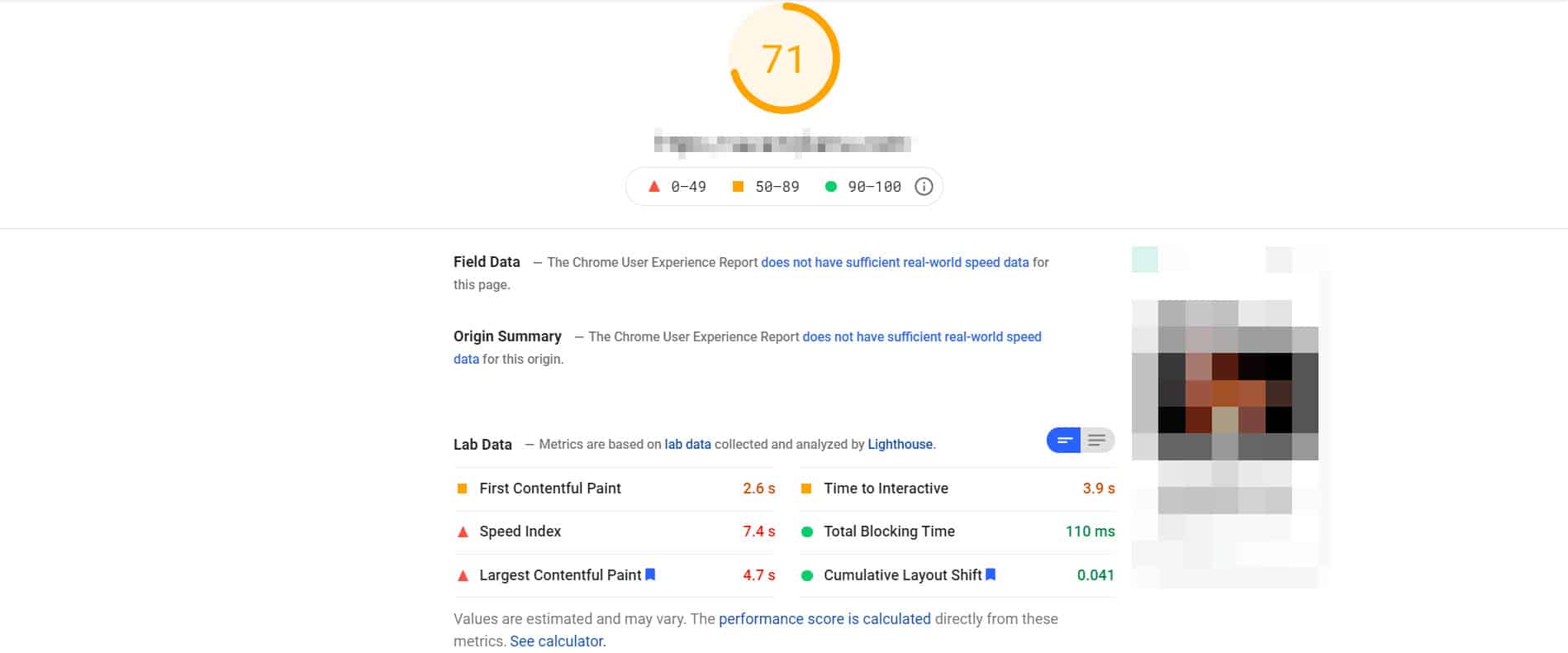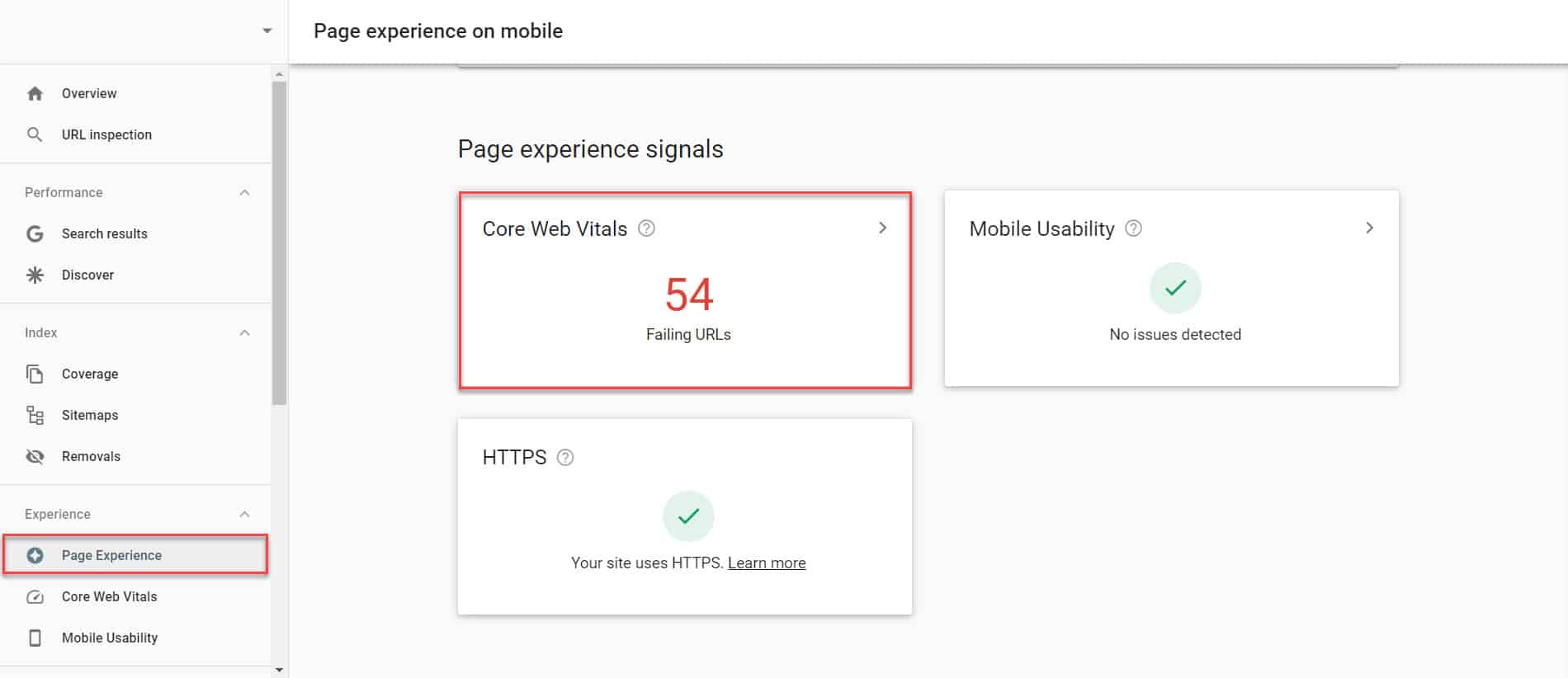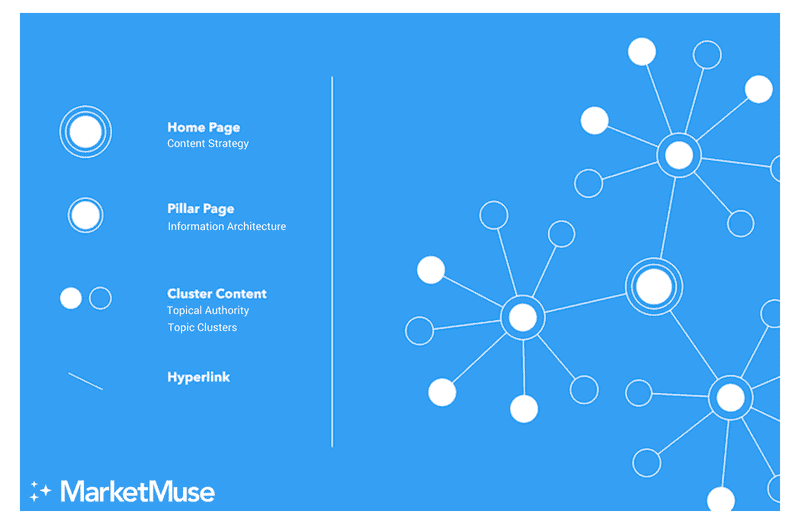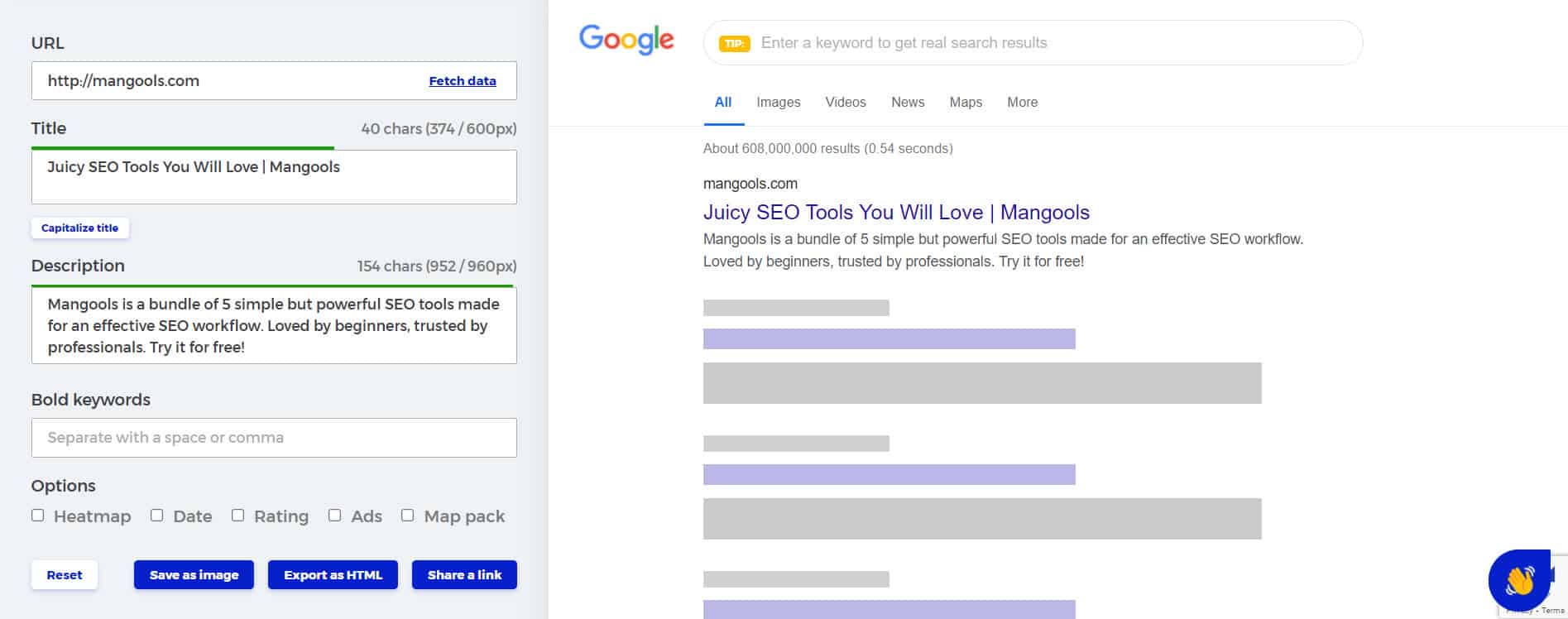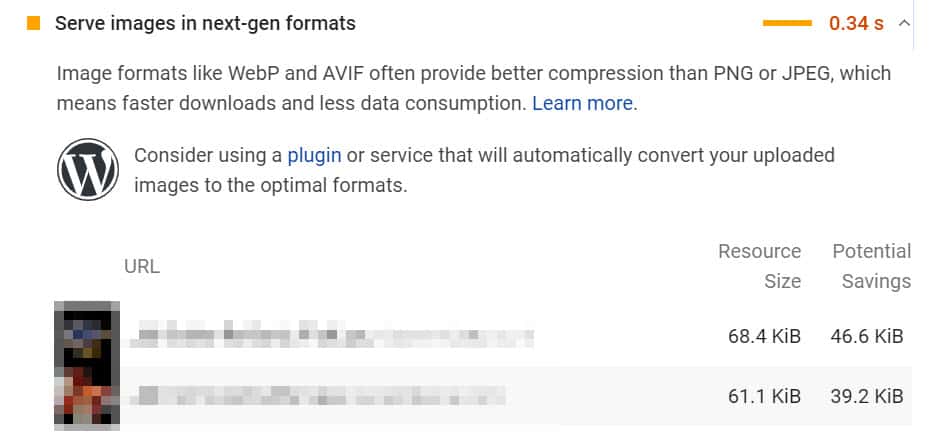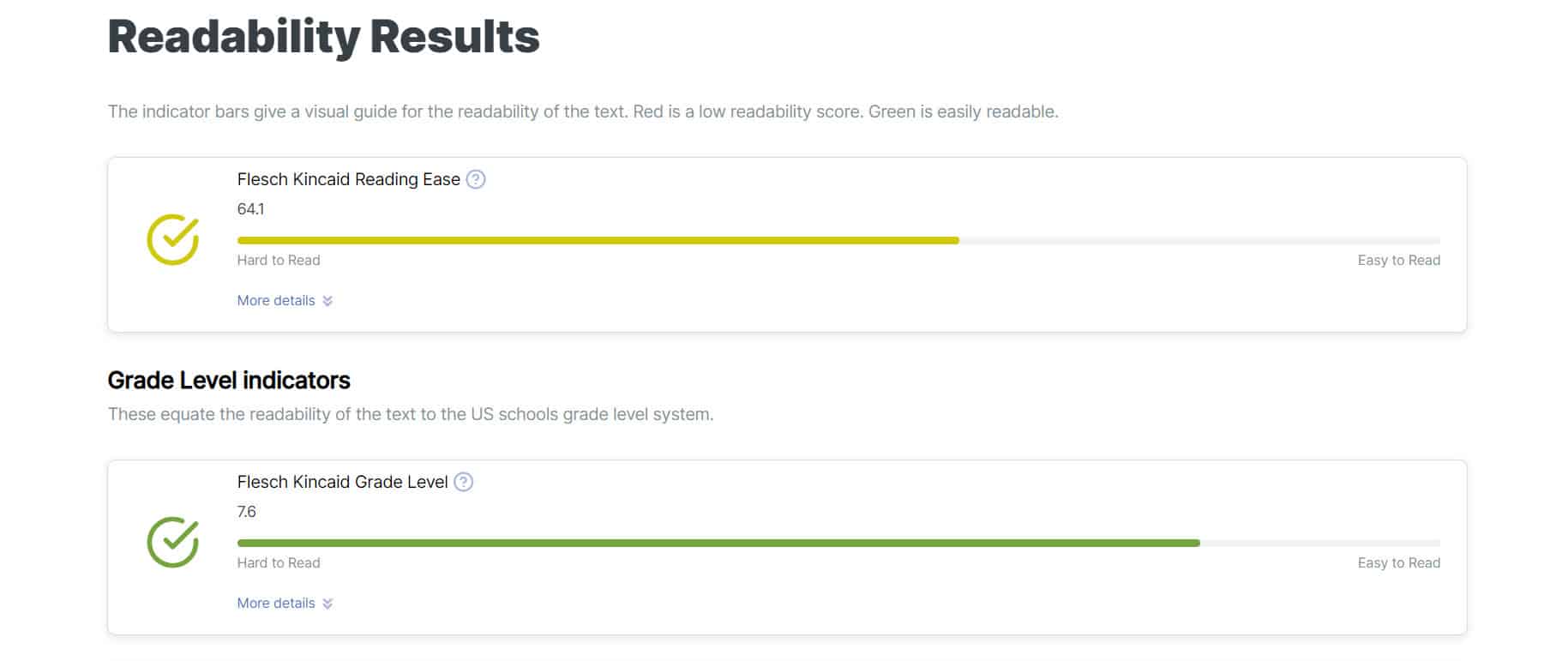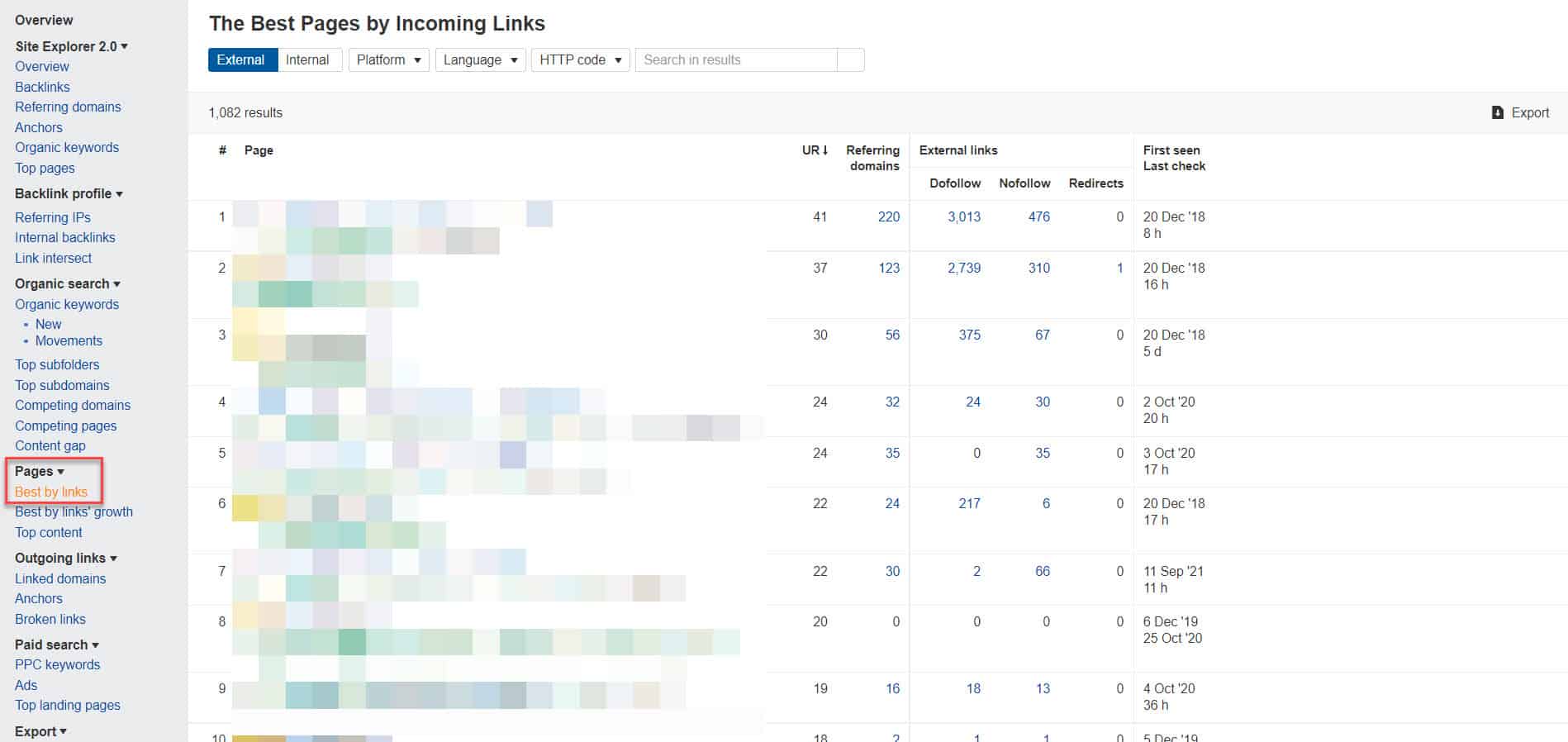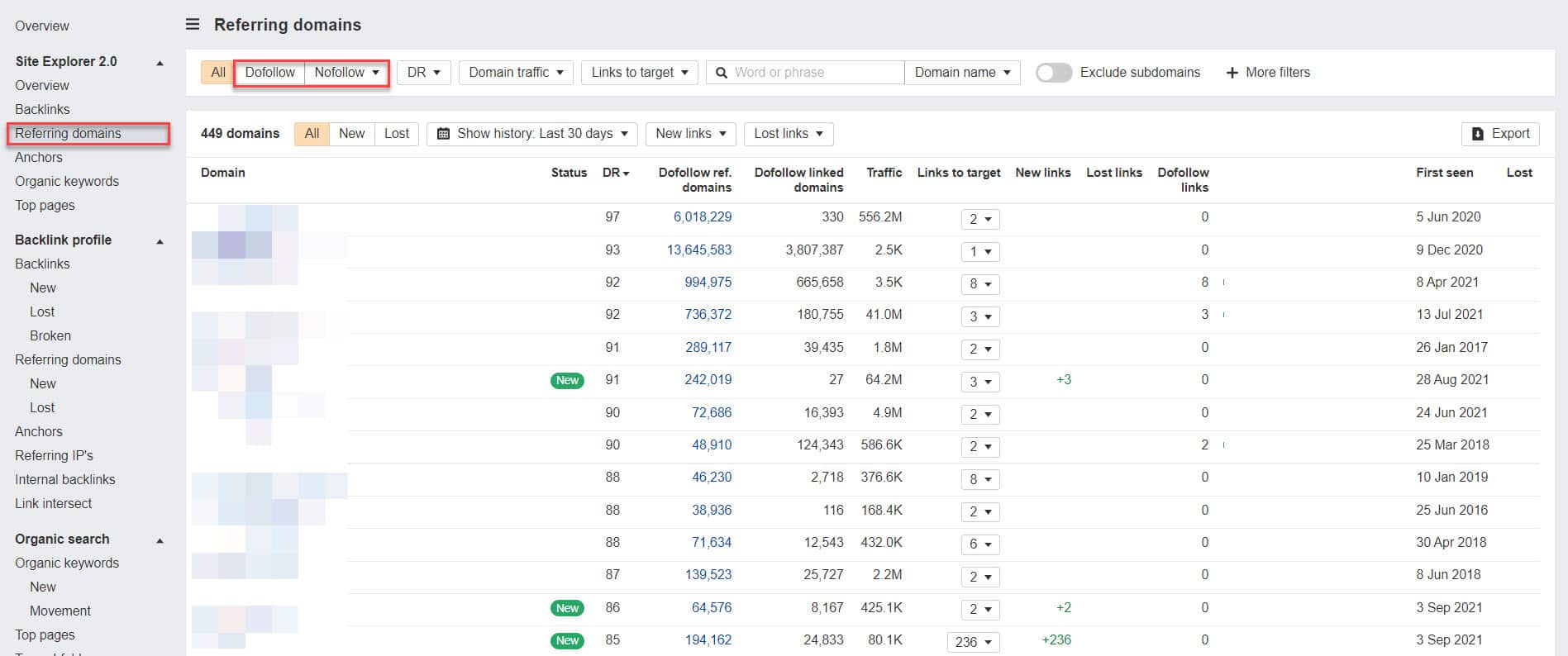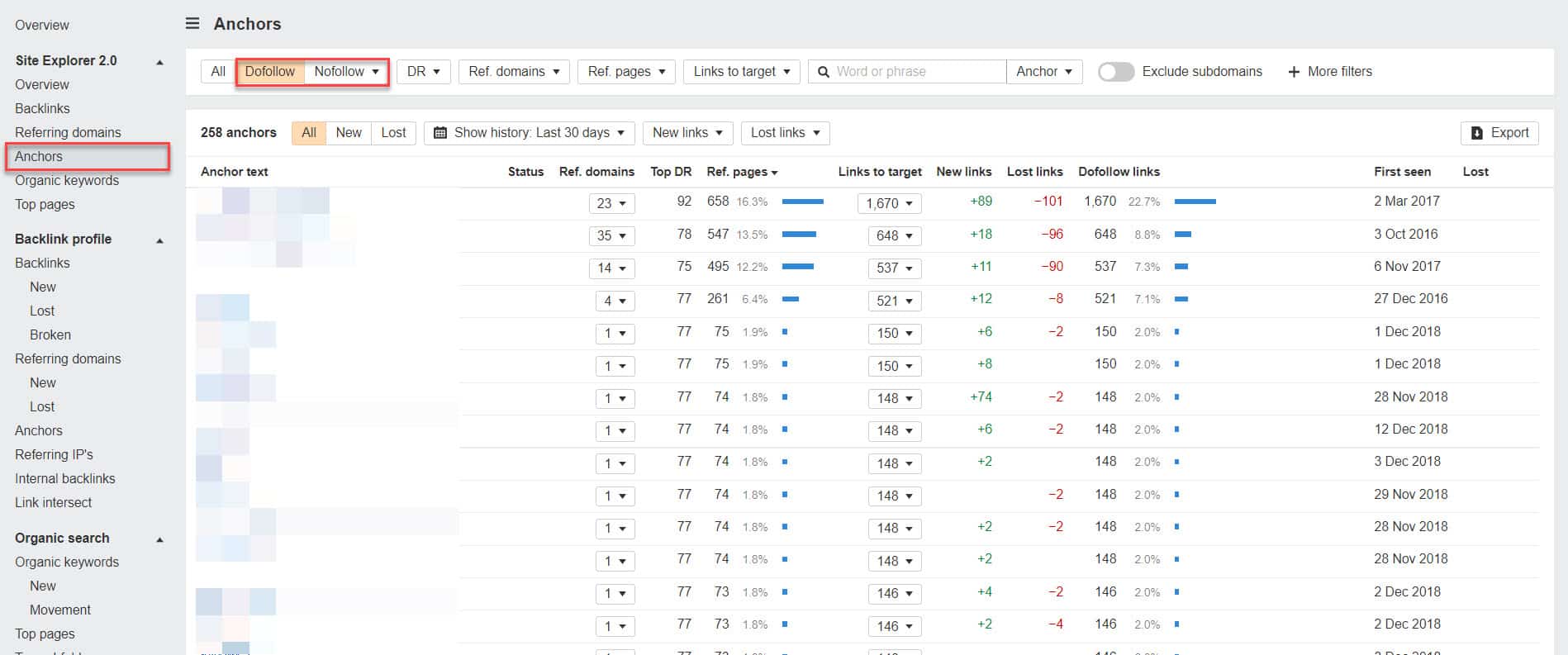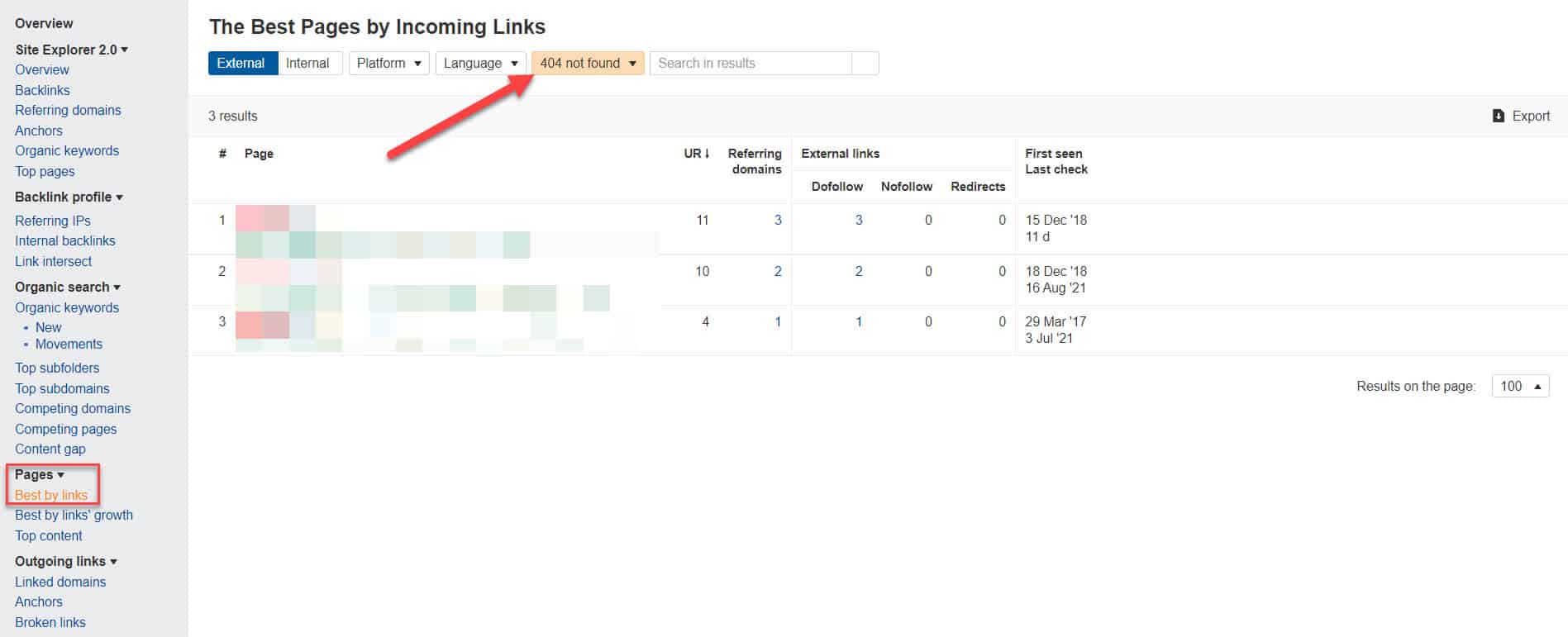As SEOs, your priority is to rank your website (or your client’s website) on top of organic search for its target keywords. But to get there, you need to know how your website is currently performing.
This is where the SEO site audit process comes in.
It allows you to effectively break down your website into its core SEO foundations and identify which among them needs fixing. If done correctly, you should eventually see your website move up the SERPs (Search Engine Result Pages).
The biggest obstacle you must overcome now is organizing your audit process to help you effectively analyze the most important ranking factors to generate the fastest SEO results.
This post is an SEO audit checklist that breaks down four critical SEO areas in detail. We’ll then discuss how to audit your website for these areas and fix any issues you find there.
Technical SEO
In layman’s terms, technical SEO is all about making your website easier to access by search spiders.
There are many factors under technical SEO that you can work on. Here are the most important ones you need to look for when performing a technical SEO audit:
#1. Crawlability and Indexability
Your goal under technical SEO is to optimize your site for crawling and indexing. However, just because search spiders can crawl your website doesn’t mean they can index your site on search results. At the same time, it doesn’t mean you should get the spiders to index them.
For example, you may have pages on your site, i.e., Terms and Conditions, Privacy Policy, that you don’t want Google or other search engines to show on search results.
Aside from the fact that they don’t add value to search engine users, they also waste your crawl budget. It refers to the number of pages Google can crawl on your site over a given period. Once the budget runs out and your site still has lots of pages to crawl, the search engine will crawl them once your crawl budget is replenished.
In this case, you won’t be able to get search spiders to crawl all pages, especially the most important ones. This results in a longer wait before search spiders can crawl and index your new pages.
To avoid this from happening, you want search engines to crawl your most important pages first. Here’s a few things you should do as part of your audit process to improve technical SEO performance of your website:
#1A – Create an XML Sitemap
A sitemap is an extensible markup language (XML) file containing all the important pages on your site. With a sitemap, search spiders don’t have to look far and wide for pages on your site that they need to crawl and index. A quick look at your sitemap would give them all the list of pages they need to process and index on SERPs.
Most Content Management Systems have built-in sitemaps that you can submit on Google Search Console or Bing Webmaster. Once uploaded, the search spiders will do their job crawling your site for pages to index.
#1B – Identify and Get Rid of Duplicate Content
Duplicate content is pages in your site with the same content but has different separate URLs. These create an index bloat on your site and deplete your crawl budget, which prevents your site from being crawled properly.
Below are the causes for the creation of duplicate content:
- The pages have no canonical URL. This results in the creation of URL variants. They confuse search spiders as to which versions of the same URL and content to crawl and index.
- For WordPress site owners, you have created lots of tags and categories for all your pages.
- The site serves WWW and non-WWW versions to search spiders.
- The site serves HTTP and HTTPS versions to search spiders.
To find if your site has duplicate content, you can use Google search operators. If your site serves non-WWW URLs, search for the term below on Google:
site:yourdomain.com inurl:www
The search operator will find if Google indexed WWW URLs of your site. If the search results return lots of pages, you have a duplicate content issue.
Depending on the duplicate content issue, each one requires a different solution. Regarding WWW URLs, you must redirect them to their non-WWW versions by configuring your .htaccess file. Insert these lines of code in the file:
RewriteEngine On
RewriteCond %{HTTP_HOST} ^yourdomain.com [NC]
RewriteRule ^(.*)$ http://www.yourdomain.com/$1 [L,R=301]
#1C – Create and Set Up Your Robots.txt
This file on your site instructs search spiders which files and folders to crawl and/or index. Robots.txt helps manage your crawl budget by preventing spiders from crawl unnecessary pages and directories on your site. As a result, spiders can prioritize reading and indexing the more important pages on your site.
For example, you can set up your robots.txt to prevent search spiders from crawling your site’s tags ad categories. If your site doesn’t have robots.txt yet, create one and include these in the file:
User-Agent: * Disallow: /tag/ Disallow: /category/
You can also “disallow” spiders to crawl pages on your site using robots.txt. Or you can use a WordPress plugin that allows you to determine pages that search spiders can not only crawl but also index. This gives you more control over which pages you want to appear on search engines.
#2 – Increase Site Speed
The faster your site loads, the better experience you provide users.
This is the principle that governs site speed as a ranking factor since 2018.
More recently, Google rolled out the Page Experience Update that prioritizes websites that create optimal browsing experiences for users. The search engine determines this using the Core Web Vitals score of your site pages.
Core Web Vitals takes into consideration the following metrics aside from site speed:
- First Input Delay – measures the time the browser takes to respond to a visitor’s initial interaction as the site loads.
- Cumulative Layout Shift – refers to the unexpected shifts taking place on your site’s elements, i.e., fonts, images, videos, etc., while loading.
- Largest Contentful Paint – the time it takes for the main content of a page to load and be ready for interaction with visitors.
You can compute the Core Web Vitals score of each URL on your site using Google PageSpeed Insights.
On the results page, you will see the exact issues of the page and suggestions on how you can fix them.
You can log in to your Google Search Console account and browse to the Experience section to take which site pages have low Core Web Vital scores.
#3 – Organize Site Structure
Site structure refers to the organization of pages in your site into silos and clusters.
You can improve your site structure by grouping pages together that share the same topic to form a silo. Under silos, you can create sub-silos and expand the topic even further if necessary.
Source: MarketMuse
The goal is to make browsing your site pages and finding the information they’re looking for much easier. Since pages with similar topics are grouped together, users are just one to two clicks away from getting to the page they need to be at.
At the same time, you enable spiders to better understand the relationships of pages on your site. This can help increase your site’s relevance to a topic, which influences the SERP rankings of your pages.
The approach to site structure depends on the kind of site you’re running. For blogs and publication sites, the site structure process is simpler. All you must do is categorize the posts according and interlink the most relevant pages together.
Things become trickier if you’re managing an e-commerce website with lots of products and categories. Siloing together related problems shouldn’t be a problem, but it’s creating a flat site architecture is what you should be worried about.
Ideally, you want all site pages to be four or fewer clicks away from the homepage. Aside from making crawling your website easier for search spiders, you ensure that you pass link authority across all your pages equally.
Also Read:
What to do if your website is indexed but not ranked?
#4 – Be Mindful of Other Advanced Technical SEO Factors
Below are advanced technical SEO factors that aren’t as crucial as the ones above. Nonetheless, they can help move the needle and improve your site’s SEO performance down the line.
- Structured data (schema markup) – provides search engines with information about what your pages are about. Search engines then show this information on search results to help increase its click-through rate (CTR). Use Google’s Structured Data Markup Helper tool to create schema markup for recipes, products, events, and more.
- Mobile SEO – Google rolled out the mobile-first indexing update in 2018, so it only makes sense to create your website with mobile in mind. Use Google Mobile-Friendly Test to see if your site pages are optimized for mobile viewing.
- Server Log File Analysis – a process that refers to reviewing a file containing all HTTP requests made to your web server. Doing so helps you provide more insights into your technical SEO efforts, such as crawl budget, accessibility issues, crawl frequency of pages, and more. You can analyze your server log file using Apache (Linux) or IIS (for Windows).
On-Page SEO
Once you have the technical SEO down pat, it’s time to move on to on-page SEO. In this part, we want to make sure to optimize your pages for their respective target keywords. And to do this, you must include the keyword on-page elements that bear the most weight as a ranking factor.
Below are the elements where including your keyword is a must:
#5 – Include Keyword in Page Title
The page title tells users and search engines what the topic of the page is. It is wrapped in the title tag and is the first thing users see on search results about a page.
As a result, it’s not simply about including the page’s keyword here. You also need to write a title that users would want to click on when they see your page on SERPs.
Another factor to consider with your page title is its length. If the title is too long, Google will truncate it so users won’t be able to see the entire title, which could lead to decreased CTR.
To make sure that the title’s length is just right enough for all of it to appear on Google SERPs, use Mangool’s Google SERP Simulator.
It tells you if the titles and meta descriptions of your pages are too long so you can shorten them as edit as you see fit.
#6 – Include Keyword in Heading
You also need to mention the keyword in the page’s heading, in particular its H1 tag which is a huge ranking factor.
But, unlike the title tag, the H1 tag only appears on the page after clicking on it from search results.
It’s possible to have the same H1 and title tags, but it’s better to create different versions for each. The goal of a title tag is to encourage people to click on the page on SERPs while the H1 describes what users can expect when reading the content.
#7 – Include Keyword in URL
The URL rounds out the “three kings of on-page SEO,” with the page title and the h1 tag being the first two.
Mentioning the keyword here helps search spiders understand what the page is about. They can then rank higher on organic search by simply including the page’s target keywords in the aforementioned elements.
#8 – Optimize Images
Mention the keyword on the alt text of images, but only do so when applicable. You don’t want to include the keyword on all images as it may appear spammy in the eyes of Google.
Aside from this, you must compress the images by decreasing their file sizes without compromising on quality.
Sites that feature lots of images on the page tend to load slower than those without images. And since site speed has increased its value as a ranking factor, there’s a good chance your site might drop a notch or two on SERP rankings.
Running a page analysis on Google PageSpeed Insights will help you identify which images you must optimize.
Another tool you can use is SiteAuditor.com. It shows you if your images observe the best practices of on-page optimization.
WordPress plugins like ShortPixel not only compress the images you upload onto your site but also compress the existing ones. This way, you don’t have to reupload the compressed versions of the old images as you can bulk optimize from the site.
#9 – Build Internal Links
Internal links are links from pages in your site that point to other pages within your site. These links are responsible for helping you build your site structure, particularly your content silos.
Aside from the XML sitemap, internal links help search spiders find out if you have new pages on your site to crawl and index. So, if you have a newly published blog post on your site, linking to it from other related pages would help the post to appear faster on Google search.
Therefore, when auditing internal links, it’s important to link pages together that share the same topic. Avoid linking unrelated pages with each other as it wouldn’t make sense to readers and search spiders.
Through internal links, you should be able to trace pages that don’t have internal links. Also referred to as orphaned pages, these don’t rank high or are currently not ranking at all on Google as a result. From here, you need to find related pages that could link out to your orphaned pages.
Finally, you may have broken internal links within your site if you updated the URLs of your old posts. From here, identify the internal links in your site that no longer exist and edit them with the correct URL.
Link Whisper is a WordPress plugin that allows you to find broken links and orphaned pages on your site that you can fix to improve your on-page SEO.
Content
Unlike on-page SEO, content audit pertains to analyzing the usefulness of a site.
Instead of simplifying following a checklist, the process requires qualitative analysis to determine whether a piece of content satisfies both users and search engines. The success of auditing content depends on your knowledge of what constitutes great content.
Below are the factors you need to review in your content audit:
#10 – Make Sure the Content Satisfies the Page’s Search Intent
You can categorize keywords into these three groups:
- Navigational – users want to learn a web page from the brand’s site, ex. samsung j7
- Information – users want to learn more information about a topic, ex. what is fragment in android.
- Commercial/Transactional – users are researching or looking to buy something, ex. best desktop computer for online teaching, bungalow for sale
Each search intent answers a specific question that you may answer with your content.
For “best desktop computer for online teaching,” you shouldn’t provide information about desktop computers in general and their parts. Instead, list down the different computers suitable for online teaching and list down their specs as well as their pros and cons. From here, readers can make their informed decision on which type to buy.
When reviewing the content, make sure that your content aligns with the search intent of the keyword it’s optimizing for. If not, you’ll have to edit the content to answer the questions that the keyword is asking.
#11 – Improve the Content’s Readability
The higher the readability score of your content, the easier it will be for readers to understand it.
Some industries require you to use technical jargon that could lower the readability score. In this case, find a way to increase the score without compromising the message on your content. What matters more is that your core audience understands your content.
You can audit the content’s readability score by copying and pasting it on a tool like WebFX’s Readability Test.
It computes for various grade-level indicators like Flesch Kincaid Grade Level, Gunning Fog, and others.
#12 – Fix Thin Content
Thin content refers to pages that don’t provide any value to readers. They are typified by their short length, although there’s more to the number of words regarding thin content.
Nonetheless, review content based on the number of words each page has. There’s a good chance you need to edit them and provide more information to make them more useful to your audience.
WP Word Count is a plugin to help you keep track of the total number of words that you have in all your content. You can also check the word count of each piece and see if you need to increase those with a low word count.
#13 – Eliminate Duplicate Content
If you used the same chunk of text on different pages of your site, Google could flag those pages as duplicate content. This issue could arise if you published guest posts from contributors who just plagiarized the content.
Therefore, if you have questionable pages on your site, copy and paste the content on Copyscape and see if the content has been published before on your site or others.
#14 – Observe E-A-T at All Times
E-A-T first appeared in Google’s 168-page Search Quality Raters Guidelines document. It stands for expertise, authority, and trustworthiness.
Source: Google
When a site publishes a piece of content, the author must possess the credentials as a subject matter expert to write and talk about the topic.
While E-A-T is not officially a ranking factor, it is heavily referenced in the Medic Update which caused lots of low-quality YMYL (Your Money, Your Life) sites to tank on organic search.
When checking whether the content on your site observes the principles of E-A-T, make sure to answer the following:
- Is the author qualified to write about the subject?
- Is the information accurate and up to date?
- Will trusted websites want to link to your content?
- Have you marked up your content with the Author, Organization, and Article structured data?
Answering the questions above allows you to create the better possible content for your website.
#15 – Keyword Cannibalization
As much as possible, you only want a single page to target a unique keyword. However, it’s possible that another page ranks for the same keyword and unintentionally ranks higher than the intended page.
This issue called keyword cannibalization could potentially hurt your SEO campaign. It dilutes the authority of the intended page as it shares the portion of the organic traffic with a page that’s not supposed to rank for the keyword in the first place.
Using a rank tracking tool, you’ll be able to see where keyword cannibalization is taking place among pages. If this happens, you want to merge both pages or redirect the URL of the undesirable page to the desired one so it can hawk all of the authority.
Off-Page
Off-page SEO, most commonly known as link building, refers to your link profile. The goal is to get backlinks from authoritative pages relevant to your niche.
However, by the very definition of “off-page,” you have little control over the links your site builds over time. While you can run your own link building campaign to help increase your site rankings, you may also get other links that could damage your SEO.
To prevent the latter from happening, you need to audit your links by following the steps below:
#16 – Identify Top Linked Pages
Pages on your site with the highest domain links have content that has value to your audience. Therefore, it’s in your best interest to keep track of your links here and never let them go.
You can find which pages these are using Ahrefs.
At the same time, there’s a good chance these pages are ranking high for their keywords and are driving you the most traffic on Google Analytics. If that’s the case, make sure to monitor its ranking. If it drops down a notch of SERPs, it’s possible that you either lost some of the links or you need to update its content.
#17 – Keep a Healthy Balance Between Nofollow and Dofollow Links
Ideally, you want to get as many dofollow backlinks from high-quality websites. This type of backlink passes authority from one website to yours, which results in a higher ranking of your site on SERPs.
The same can’t be said about nofollow backlinks. They don’t pass authority to your site, no matter how many you receive from authoritative sites.
However, this doesn’t mean you should ignore nofollow links from your SEO strategy. A natural-looking link profile has a healthy mix of dofollow and nofollow backlinks.
Therefore, while building dofollow backlinks is key to higher rankings, don’t go out of your way to exclusively build these links in your profile.
Check the type of links your site has on tools like Ahrefs.
Maybe the prominence of dofollow links is holding your site back from unleashing its potential on SERPs. From here, consider building more nofollow backlinks to make your profile appear more natural.
#18 – Anchor Text
There are different types of anchor text you can use to link back to your site:
- Exact match – uses the keyword you want to rank your page for as anchor text, i.e., if your keyword is “best Bluetooth speakers,” anchor text is “best Bluetooth speakers.”
- Partial match – uses words from the target keyword as anchor text, i.e., if your keyword is “best Bluetooth speakers,” anchor text is “Bluetooth speakers to use.”
- Naked – uses the page URL as the anchor text., i.e., if the page URL is pageurl.com, anchor text is “pageurl.com.”
- Branded – uses the site name as anchor text, i.e., if your brand name is Page URL, anchor text is “Page URL.”
- Generic – uses common phrases like “click here,” “go to this page,” and others as anchor text.
Ideally, you want to get as many exact match anchor text for your backlinks to amplify their effect and rank higher for your keyword.
However, similar to the types of backlinks, having natural-looking and contextual anchor text for your anchor text won’t make your site stick out like a sore thumb.
The ratio as to which anchor text is best to use for your site is a case-to-case basis. You can check Ahrefs for the anchors used on your site and classify the most used ones accordingly.
If the majority of anchor texts used on your backlinks are partial match and naked types, then consider using more of these anchor texts on your upcoming campaign.
#19 – Identify Low-Quality Backlinks
As mentioned earlier, spammy backlinks may affect your search rankings. While Google has become smarter and is able to discern low-quality backlinks and disregard them, you need to be wary of whether these links negatively affect your rankings on SERPs.
Using Ahrefs, you can find low-quality links by organizing the referring domains according to Domain Authority (DA) in ascending order. DA is the metric Ahrefs uses to display a site’s authority according to various metrics.
A domain with low DA means the site is either a new site or has low quality. Again, it’s best to disregard these links unless they coincide with a ranking drop. Only then should you consider disavowing the backlinks to restore your rankings.
#20 – Find Broken Links and Recover Them
A drop in rankings may also coincide with losing some of your backlinks. This happens when the owner of the authoritative site manually removes the link, deletes the page where your link once was, or deletes the site.
To see your site’s broken backlinks, go to Pages > Best by links and filter the results to 404 not found.
If the site still exists, you must reach out to them and reclaim your backlink. Kindly ask them why they removed the link and what you can do to get it back up.
Conclusion
There’s a lot that goes into ranking your websites on top of search engines, and an SEO audit plays a crucial role in it. By understanding how your site is currently performing and how you can improve it, you can constantly scale your website’s SEO success and reach the very top of search results.
Running SEO audits can be a painstaking process if you don’t have the tools like Ahrefs and SiteAuditor.com to help you collect the data. From here, focus on fixing the issues to improve your site’s ranking eventually.
